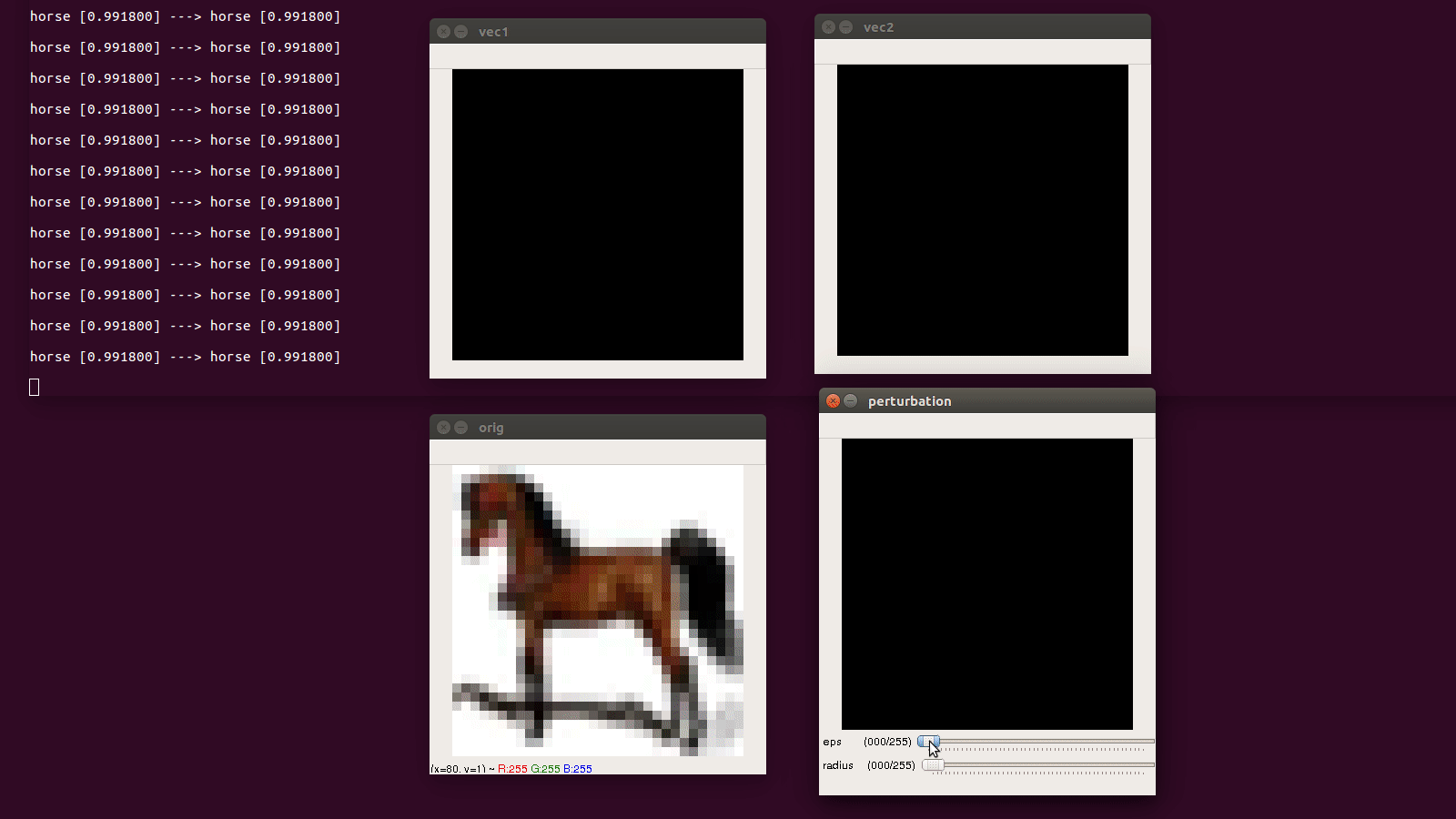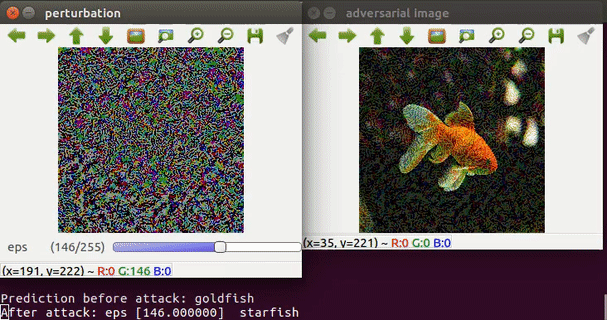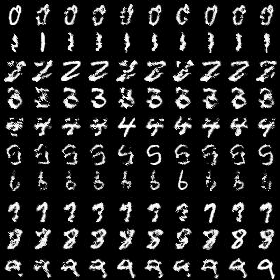sarathknv / Adversarial Examples Pytorch
Programming Languages
Labels
Projects that are alternatives of or similar to Adversarial Examples Pytorch
Implementation of Papers on Adversarial Examples
Implementation of papers with real-time visualizations and parameter control.
Dependencies
- Python3
- PyTorch (built from source)
- OpenCV
- NumPy
- SciPy
- TensorBoard
Contents
- Adversarial perturbations are not random noise. DNNs are robust to such random perturbations.
- Fast Gradient Sign Method (FGSM)
- Basic Iterative Method
- One Pixel Attack
- AdvGAN - Generating Adversarial Examples with Adversarial Networks
- Spatially Transformed Adversarial Examples
- Generative Adversarial Trainer
Random Perturbations
From one of the first papers on Adversarial examples - Explaining and Harnessing Adversarial Examples,
The direction of perturbation, rather than the specific point in space, matters most. Space is not full of pockets of adversarial examples that finely tile the reals like the rational numbers.
This project examines this idea by testing the robustness of a DNN to randomly generated perturbations.
Usage
$ python3 explore_space.py --img images/horse.png
Demo
This code adds to the input image (img) a randomly generated perturbation (vec1) which is subjected to a max norm constraint eps. This adversarial image lies on a hypercube centerd around the original image. To explore a region (a hypersphere) around the adversarial image (img + vec1), we add to it another perturbation (vec2) which is constrained by L2 norm rad.
Pressing keys e and r generates new vec1 and vec2 respectively.
Random Perturbations
The classifier is robust to these random perturbations even though they have severely degraded the image. Perturbations are clearly noticeable and have significantly higher max norm.
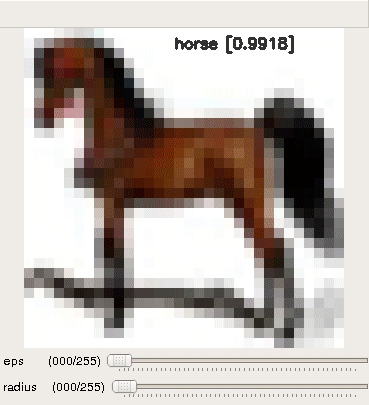 |
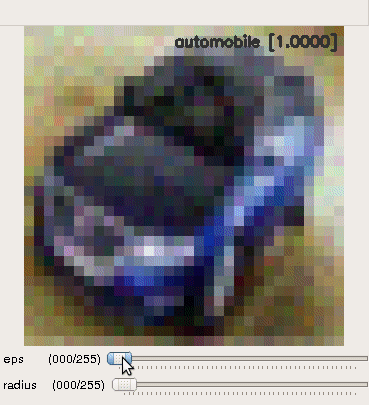 |
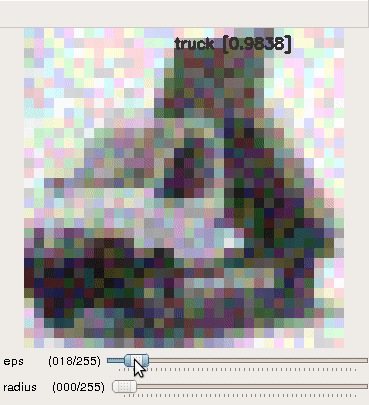 |
|---|---|---|
| horse | automobile | : truck : |
In above images, there is no change in class labels and very small drops in probability.
FGSM Perturbations
A properly directed perturbation with max norm as low as 3, which is almost imperceptible, can fool the classifier.
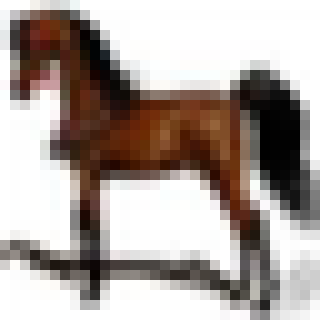 |
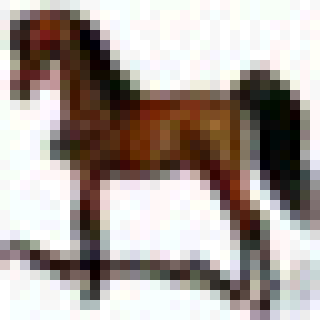 |
 |
|---|---|---|
| horse | predicted - dog | perturbation (eps = 6) |
Fast Gradient Sign Method (FGSM)
Usage
- Run the script
$ python3 fgsm_mnist.py --img one.jpg --gpu
$ python3 fgsm_imagenet.py --img goldfish.jpg --model resnet18 --gpu
fgsm_mnsit.py - for attack on custom model trained on MNIST whose weights are 9920.pth.tar.
fgsm_imagenet - for pretrained imagenet models - resnet18, resnet50 etc.
-
Control keys
- use trackbar to change
epsilon(max norm) -
esc- close -
s- save perturbation and adversarial image
- use trackbar to change
Demo
Results
MNIST
| Adversarial Image | Perturbation |
|---|---|
 |
 |
| Pred: 4 | eps: 38 |
 |
 |
| Pred: 7 | eps: 60 |
.png) |
_42.png) |
| Pred: 8 | eps: 42 |
 |
 |
| Pred: 8 | eps: 12 |
 |
 |
| Pred: 9 | eps: 17 |
Basic Iterative Method (Targeted and Untargeted)
Paper: Adversarial examples in the physical world
Usage
- Run the script
$ python3 iterative.py --img images/goldfish.jpg --model resnet18 --target 4
# If argument 'target' is not specified, it is untargeted attack
-
Control keys
- use trackbar to change
epsilon(max norm of perturbation) anditer(number of iterations) -
escclose andspaceto pause -
ssave perturbation and adversarial image
- use trackbar to change
Demo
One Pixel Attack for Fooling Deep Neural Networks
Existence of single pixel adversarial perturbations suggest that the assumption made in Explaining and Harnessing Adversarial Examples that small additive perturbation on the values of many dimensions will accumulate and cause huge change to the output, might not be necessary for explaining why natural images are sensitive to small perturbations.
Usage
$ python3 one_pixel.py --img airplane.jpg --d 3 --iters 600 --popsize 10
d is number of pixels to change (L0 norm)
iters and popsize are paprameters for Differential Evolution
Results
Attacks are typically successful for images with low confidence. For successful attacks on high confidence images increase d, i.e., number of pixels to perturb.
| bird [0.8075] | deer [0.8933] | frog [0.8000] | bird [0.6866] | deer [0.9406] |
AdvGAN - Generating Adversarial Examples with Adversarial Networks
Paper | IJCAI 2018
Usage
Inference
$ python3 advgan.py --img images/0.jpg --target 4 --model Model_C --bound 0.3
Each of these settings has a separate Generator trained. This code loads appropriate trained model from saved/ directory based on given arguments. As of now there are 22 Generators for different targets, different bounds (0.2 and 0.3) and target models (only Model_C for now).
Training AdvGAN (Untargeted)
$ python3 train_advgan.py --model Model_C --gpu
Training AdvGAN (Targeted)
$ python3 train_advgan.py --model Model_C --target 4 --thres 0.3 --gpu
# thres: Perturbation bound
Use --help for other arguments available (epochs, batch_size, lr etc.)
Training Target Models (Models A, B and C)
$ python3 train_target_models.py --model Model_C
For TensorBoard visualization,
$ python3 generators.py
$ python3 discriminators.py
This code supports only MNIST dataset for now. Same notations as in paper are followed (mostly).
Results
There are few changes that have been made for model to work.
- Generator in paper has
ReLUon the last layer. If input data is normalized to [-1 1] there wouldn't be any perturbation in the negative region. As expected accuracies were poor (~10% Untargeted). SoReLUwas removed. Also, data normalization had significat effect on performance. With [-1 1] accuracies were around 70%. But with [0 1] normalization accuracies were ~99%. - Perturbations (
pert) and adversarial images (x + pert) were clipped. It's not converging otherwise.
These results are for the following settings.
- Dataset - MNIST
- Data normalization - [0 1]
- thres (perturbation bound) - 0.3 and 0.2
- No
ReLUat the end in Generator - Epochs - 15
- Batch Size - 128
- LR Scheduler -
step_size5,gamma0.1 and initiallr- 0.001
| Target | Acc [thres: 0.3] | Acc [thres: 0.2] |
|---|---|---|
| Untargeted | 0.9921 | 0.8966 |
| 0 | 0.9643 | 0.4330 |
| 1 | 0.9822 | 0.4749 |
| 2 | 0.9961 | 0.8499 |
| 3 | 0.9939 | 0.8696 |
| 4 | 0.9833 | 0.6293 |
| 5 | 0.9918 | 0.7968 |
| 6 | 0.9584 | 0.4652 |
| 7 | 0.9899 | 0.6866 |
| 8 | 0.9943 | 0.8430 |
| 9 | 0.9922 | 0.7610 |
Untargeted
 |
 |
 |
 |
 |
 |
 |
 |
 |
 |
|---|---|---|---|---|---|---|---|---|---|
| Pred: 9 | Pred: 3 | Pred: 8 | Pred: 8 | Pred: 4 | Pred: 3 | Pred: 8 | Pred: 3 | Pred: 3 | Pred: 8 |
Targeted
Spatially Transformed Adversarial Examples
Paper | ICLR 2018
Refer View Synthesis by Appearance Flow for clarity.
Usage
$ python3 stadv.py --img images/1.jpg --target 7
Requires OpenCV for real-time visualization.
Demo
Results
MNIST
Column index is target label and ground truth images are along diagonal.

